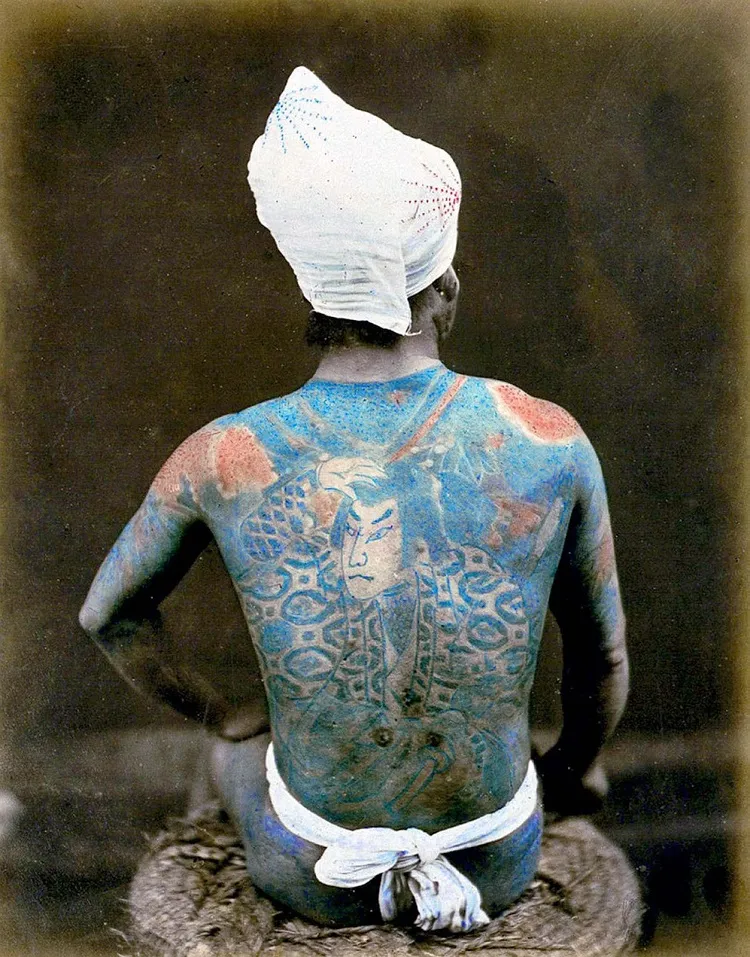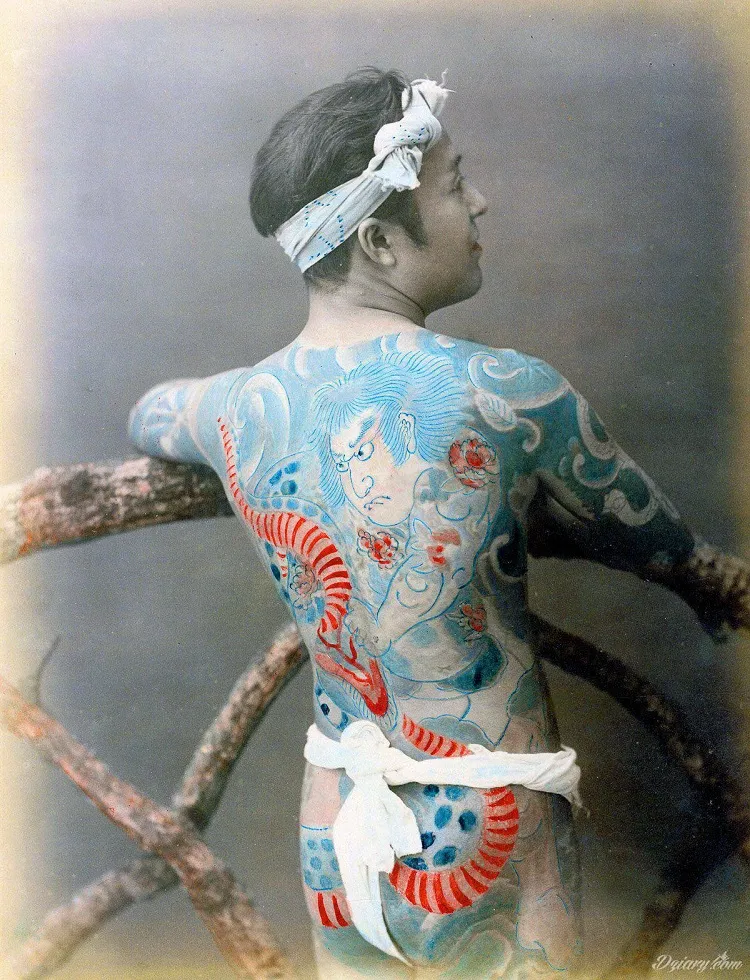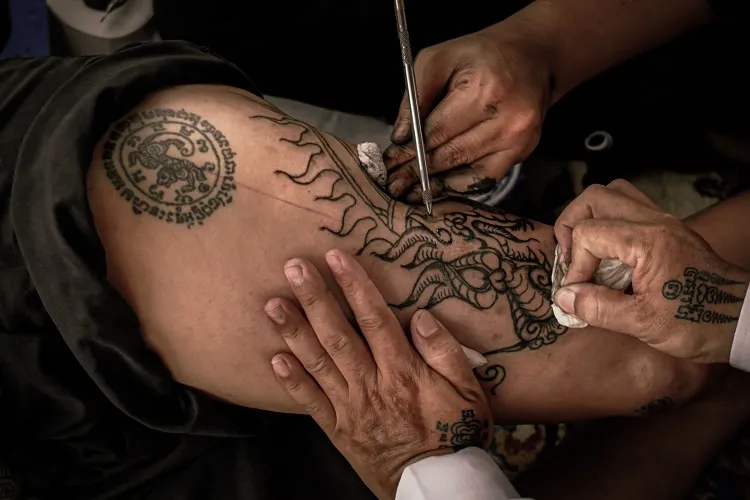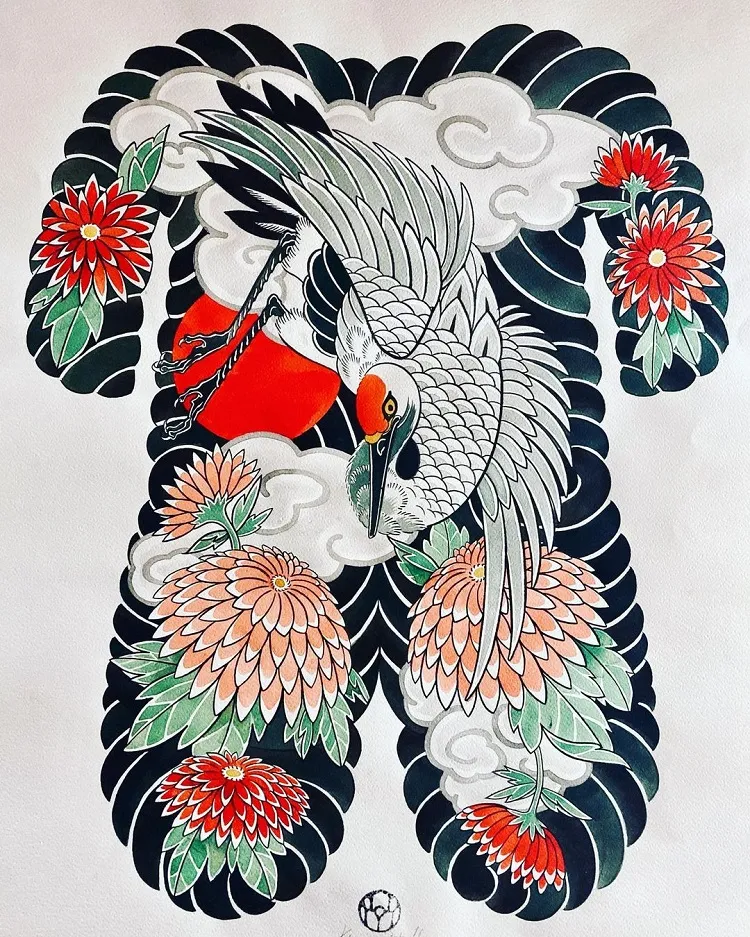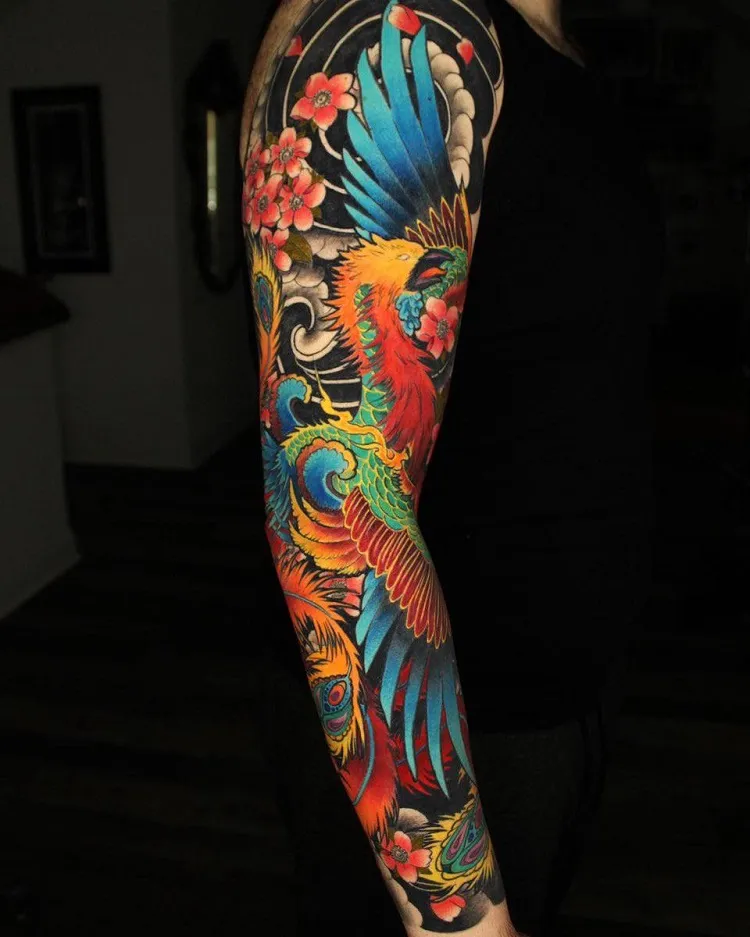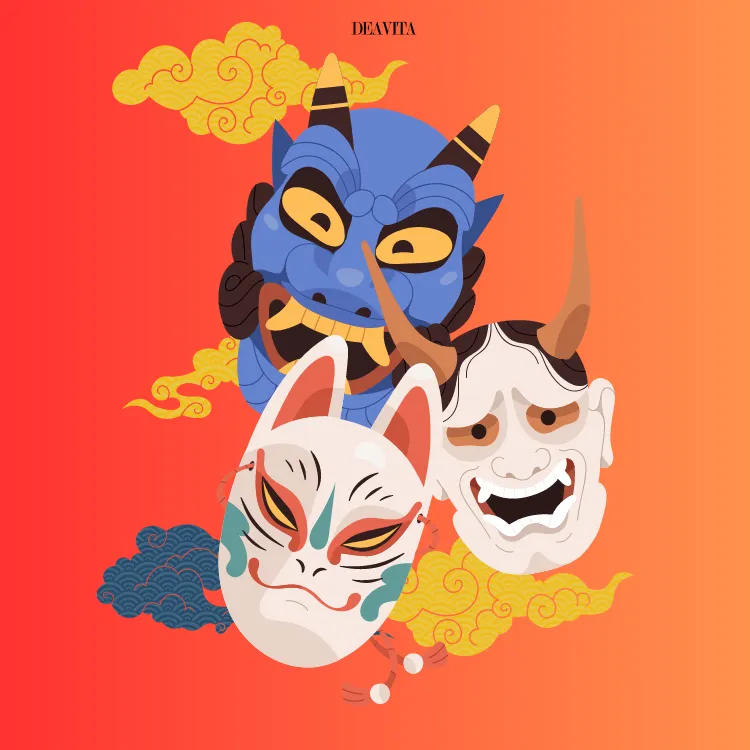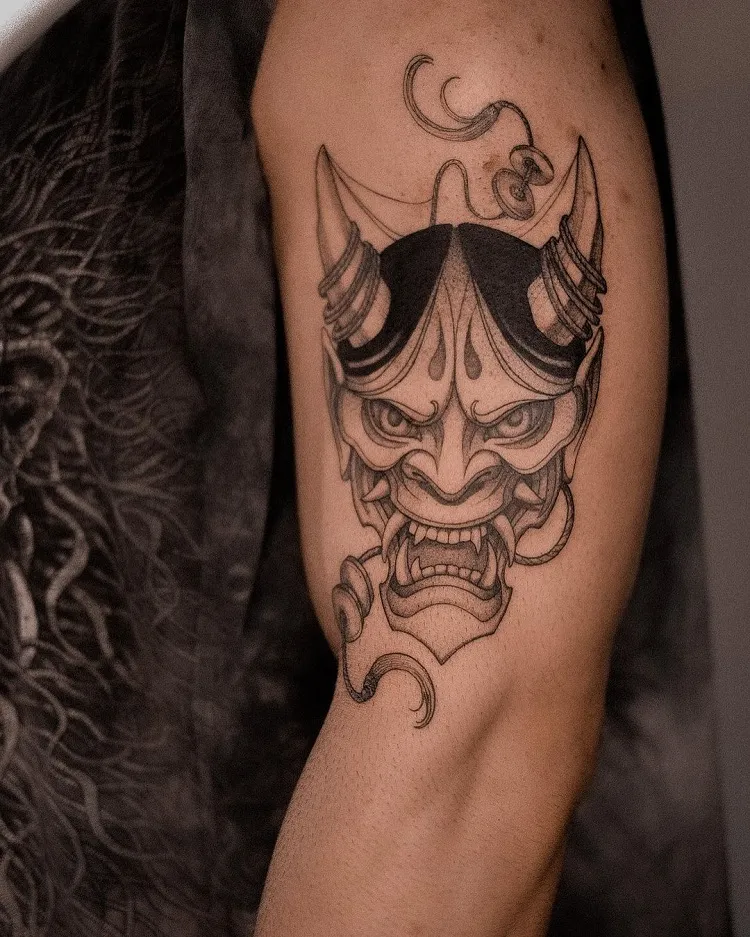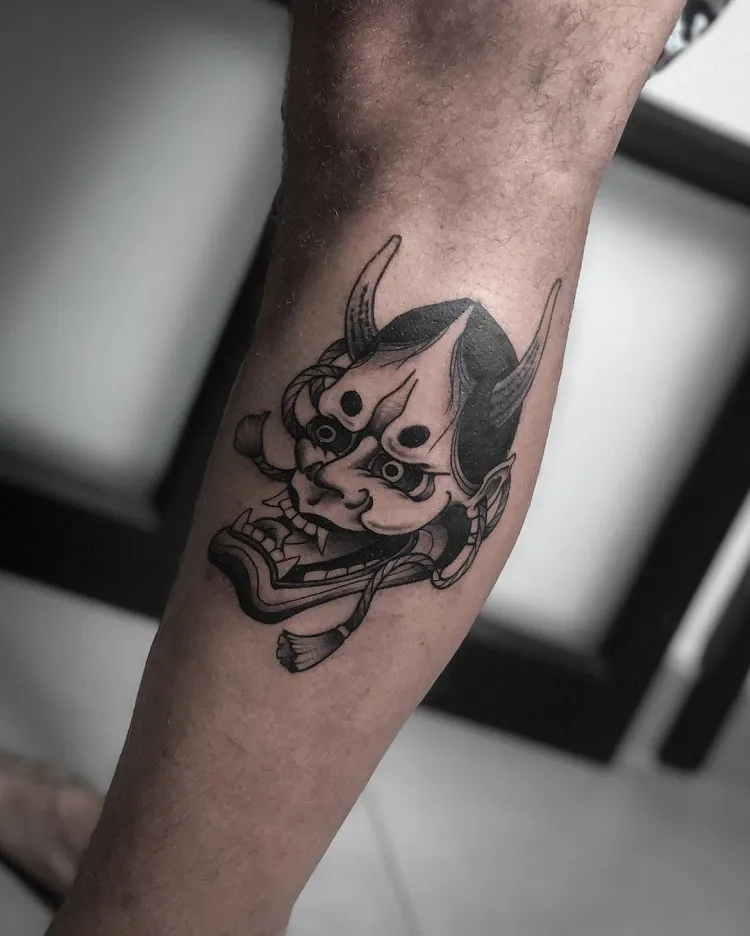Traditional Japanese tattoos are one of the most controversial and culturally influential tattoo designs. Their origin can be traced back centuries with the first images of these tattoos dating from 5000 BCE. Unlike many other styles of tattoo art, this one carries profound meaning and tradition that has been passed on from generation to generation.
The Japanese tattoo images are vastly influenced by the local nature and mysticism. Over the years these tattoos have become a subject of high interest for people from all over the world, which has inspired many tattoo artists from non-Japanese backgrounds to adopt this style. Undoubtedly, there is much to be learned about this ancient art form, so let’s dive into the history of some of the most popular Japanese-style tattoo symbols and their profound meaning!
What are Traditional Japanese Tattoos Called?
Japanese tattoos are popularly known as irezumi, which means “inputting ink into the skin”. This is the general term used for all kinds of Japanese tattoos such as tribal, western, neo-traditional, and black and gray. Other names you may have stumbled upon are horimono and wabori. Horimono literally translates as “to engrave” and refers to the Japanese style of tattooing during the Edo period (1602 – 1863). This is the time when Japanese tattoos began to transition from their original role as a symbol of punishment into a more decorative art form. Wabori simply means “Japanese tattoo” and is a unifying term used to describe the traditional Japanese tattoo designs.
What do Traditional Japanese Tattoos Mean?
Japanese tattoos follow strict traditions and beliefs. The designs are inspired by Ukiyo-e, which is an ancient type of Japanese art that was popular from the 17th to the 19th century. Ukiyo-e translates as “pictures of the floating world” and is one of the most prominent genres of Japanese art. The motifs that were intertwined in the images depicted on woodblock showed the everyday life of Japanese people as well as ancient symbols of mysticism. The aim of Japanese tattoos is to adopt a universal language of imagery that carries a meaning which is recognizable by everybody. That way the person who sees the tattoos knows their meaning which makes it easy for them to decipher their personality traits, or whether they belong to a street gang or political affiliation.
Traditional Japanese Tattoo Designs
Katsushika Hokusai, Utagawa Kuniyoshi, Kitagawa Utamaro, and Tōshūsai Sharaku are some of the names of the most popular woodblock artists that have influenced the Japanese style of tattooing. Their imagery has been adopted by tattooists from all over the world and continues to be a heavy influence to this day. Let’s take a look at some of the main subjects portrayed in Japanese tattoos and learn about their unique meaning.
Japanese Bodysuit Tattoos
Credits: karmakitch
Before the Edo period, tattoos served as a form of punishment given to criminals and prisoners, so people would know that they have a wrongful past. Later on, a new form of tattoo started gaining popularity as a form of rebellion – the bodysuit. The people who got this tattoo would leave sections of their body blank – the areas around their neck, wrists, ankles, and armpits. Over time tattooists developed a few different kinds of bodysuit designs. They range from full-body to split-chest designs, sleeves covering only the arms and shoulders, or full-back pieces. Here’s a schematic representation of what those designs look like:
Credits: redcrownedirezumi.com
Ryu – The Japanese Dragon
Credits: alldaytattoobkk
Probably one of the most popular and recognizable tattoos of this style is the Japanese dragon, also known as Ryu. This tattoo symbolizes divine wisdom and strength. In mythology, dragons are believed to shape-shift and adopt the characteristics of the animals they stumble upon during their journeys. The body of Ryu is composed of a head that resembles that of a camel, its body is similar to the one of a snake and is covered in Koi fish scales. It also has stag horns and talons reminiscing of those of a hawk or a chicken.
Koi Fish Tattoo
Credits: vondetattoo
Koi fish is a symbol of resilience, strength, determination, and courage. There is an ancient tale that tells the story of the koi fish in China who were the only fish capable of swimming upstream in the Yellow River and making it past the Dragon’s Gate. Those koi fish who passed the gate are said to have been rewarded by being turned into a dragon.
Hou-ou – The Japanese Phoenix
Hou-ou, or the Japanese phoenix, is a symbol of rebirth and new beginnings. The phoenix is a mythical bird that’s part of the folklore of many cultures. The story about its origin explains how it was engulfed in flames and then rose from its own ashes. It’s interesting to know that the Death card in a Tarot deck is also a sign of renewal and triumph and in some of the modern redesigns of the deck there is a phoenix illustrated on that card.
Japanese Faces Tattoo
I’m sure most of you have seen at least one tattoo of a scary, grumpy, reminiscent of a human face Japanese tattoo. Amongst some of the most popular designs are those of traditional Japanese face masks, each of which hides a different story and meaning. Let’s take a closer look at them and learn what they represent.
Namakubi
Namakubi faces tattoo symbolizes the impermanence of life, the strength and will of the warrior, and respect for their honorable deeds. The tattoo illustrates a head covered in blood at the moment of performing Seppuku. This is an ancient ceremony during which samurai are asked to perform a ritual of disembowelment with a katana sword. This is believed to be an honorable way for them to end their journey on Earth.
Hannya
This fine line tattoo of a Hannya mask symbolizes a female demon that was devoured by her own jealousy and anger. This tattoo can represent the social status of a woman depending on the design. A black and gray, or white hannya mask means that the woman who has this tattoo comes from a rich and noble family. If the mask is red, this shows that the woman comes from a more unfortunate upbringing.
Oni Mask
Oni masks represent the male demons and are usually tattooed as a protective symbol that repels evil spirits. The word oni also translates as an ogre or a troll.
Interested in more Japanese tattoo art? Find out here about the symbolism & meaning of the chrysanthemum tattoo, plus some cool designs.

